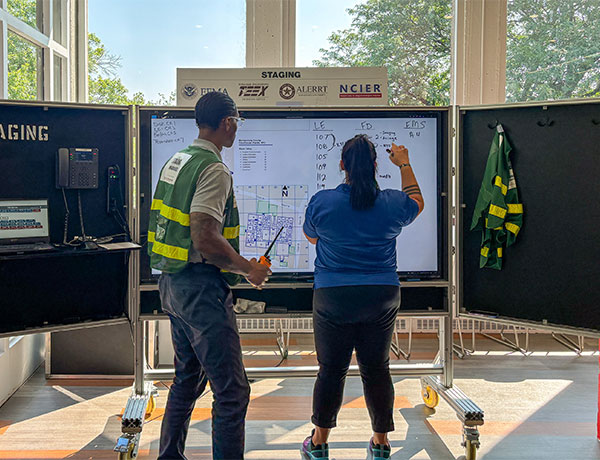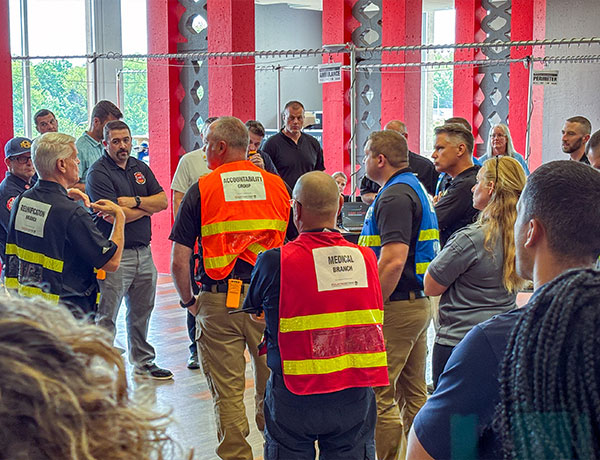
This wasn’t a real emergency, but one of 11 scenarios that more than 60 first responders tackled in an intensive three-day training course held at the University of Hartford in August.
An array of 3D virtual reality simulators—including a virtual “helicopter” with realistic-looking controls—filled the Gengras Student Union Café. VR goggles, radios, maps, situation boards, and a “press briefing” area complete with lights and microphone added to the immersive experience.
“This could not be more real other than being in the real thing,” said Michael Kaselouskas, the University’s chief of public safety. He was one of several members of UHart’s public safety team who participated in the course, along with State Police, regional emergency managers, firefighters, EMS, and local patrol officers from across Connecticut. A LifeStar helicopter pilot and two public information officers also participated. The course was given by C3 Pathways, a nationally renowned training organization.
“We usually train in our own separate ‘silos,’” Kaselouskas said, “but this training brought all these professions together to train in real scenarios under critical stress to make immediate decisions. Failure—or no decision—was not an option.”
Michael Kaselouskas, UHart Chief of Public SafetyWe always hope we’ll never need to use these skills, but if the worst should occur, we know our officers will be prepared.

The training scenarios became progressively more complex as the course went on. By the third day, participants were handling incidents involving multiple suspects, multiple locations, explosives, and hostage situations. The VR equipment allowed instructors to monitor the trainees’ decisions in real time, with a debriefing after each scenario to go over lessons learned.
For the University’s Department of Public Safety, the FEMA-certified course is another powerful tool in an extensive toolbox. Officers participate in department-wide active shooter simulations throughout the year—one was held earlier in the summer—and the University is constantly reviewing, refining, and holding exercises to practice its emergency response protocols.
“We always hope we’ll never need to use these skills,” Kaselouskas said. “But if the worst should occur, we know our officers will be prepared.”